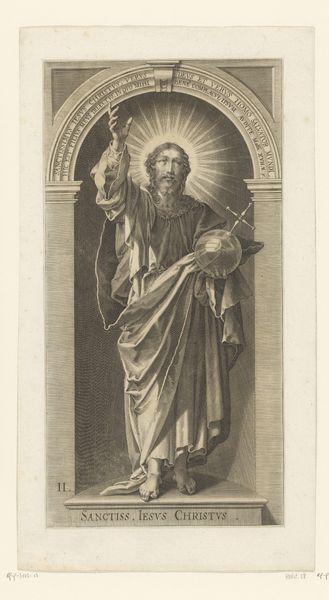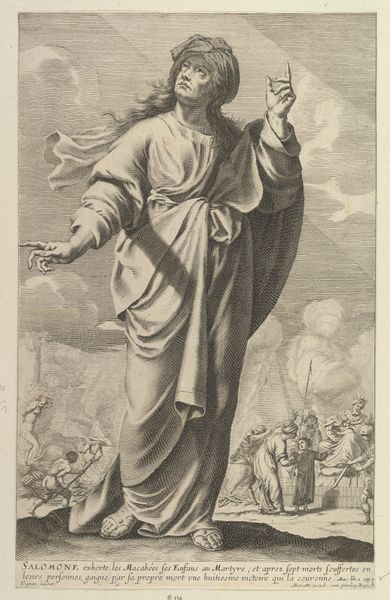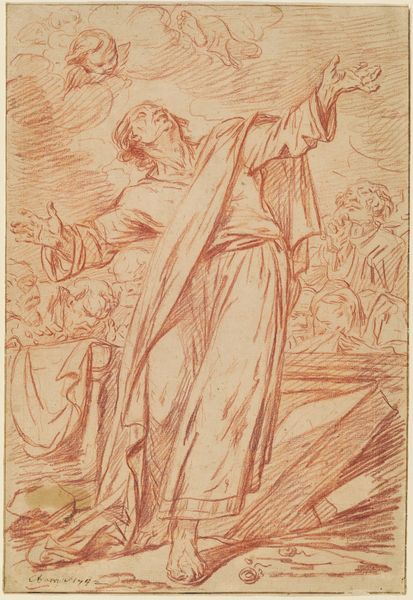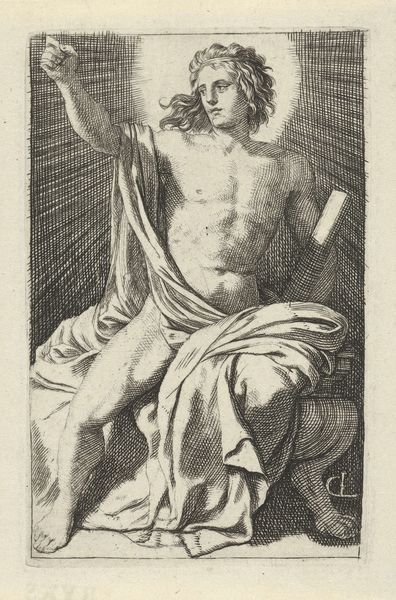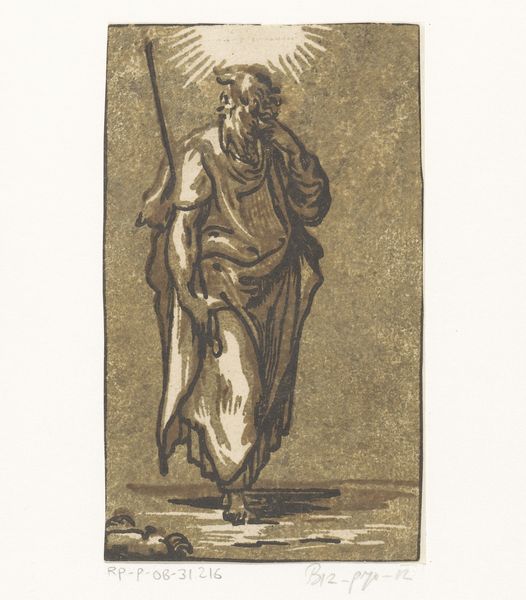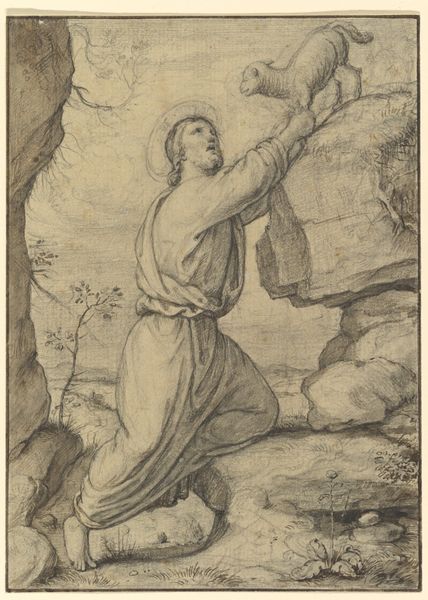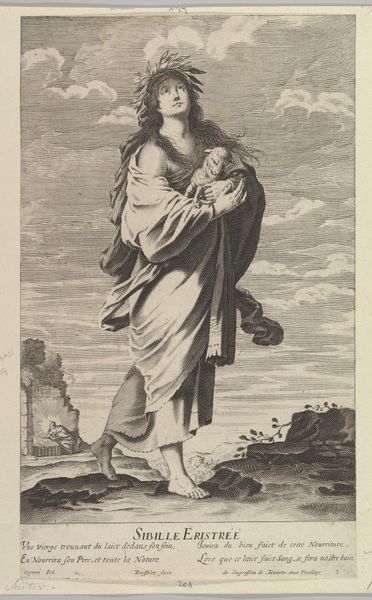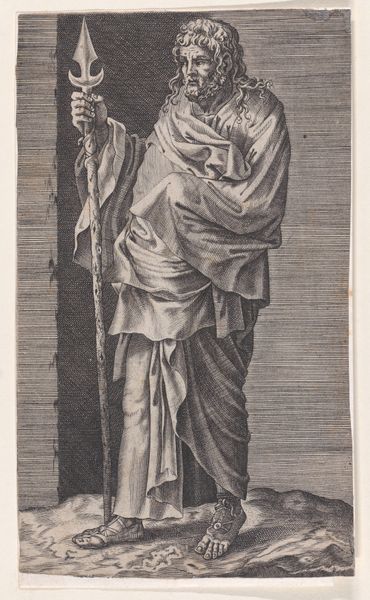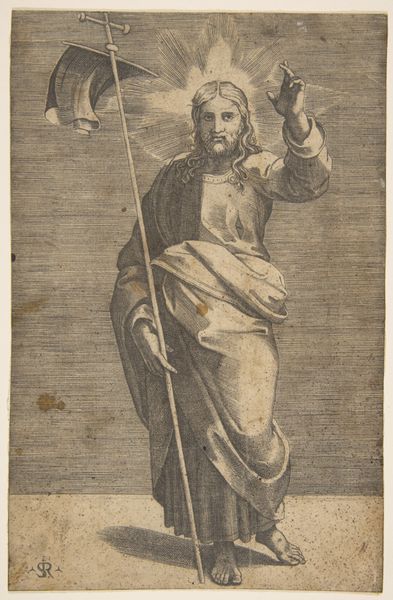
drawing, print, intaglio, engraving
#
portrait
#
drawing
# print
#
intaglio
#
figuration
#
history-painting
#
italian-renaissance
#
engraving
Dimensions: sheet: 7 1/2 x 6 5/16 in. (19.1 x 16 cm) trimmed to platemark
Copyright: Public Domain
Curator: This is Battista Franco's "The Saviour Covered in a Large Cloak," an engraving made sometime between 1510 and 1561. It's part of the Metropolitan Museum's collection. What strikes you first about it? Editor: The sheer upward motion, really. It's a figure emerging—or ascending—from swirling clouds, arms outstretched, almost like he’s being pulled toward the light, a literal representation of being saved, perhaps? Curator: The billowing cloak certainly adds to that sense of upward movement. Franco used intaglio, a printmaking technique, to create a striking interplay of light and shadow. Notice how the lines radiate outward from the figure’s head. Light, in iconography, almost always signifies divinity, revelation. Editor: Right. And those cloud forms at his feet, rendered with such delicate, swirling lines...they almost feel unstable, ephemeral. There is the solid figure in the foreground which lends a kind of tension—an anchor and flight at the same time. There's a beautiful push and pull happening. It's quite theatrical, in a way, don't you think? Curator: Absolutely! The Renaissance was very interested in capturing drama. The pose itself, the upward gaze, these are all very intentional. It’s about conveying religious intensity, creating an image that inspires reverence and contemplation in the viewer. Notice also how simple the figure’s face and hair appear when put against the very carefully created billowing cloak. I see it more as a representation of grace—receiving something rather than being dragged upwards. Editor: It definitely evokes a powerful feeling. What is particularly striking is how modern and how emotionally nuanced an artwork from that era can appear to be today. So human. Curator: I find Franco’s strategic use of light to be profoundly moving, especially as it relates to cultural memory and these traditional symbols. Editor: The artwork offers something visceral, a truly human experience of hope, awe, or perhaps resignation. And to render such emotions in an image made centuries ago. Curator: A timeless visual statement on spirituality and transcendence. Editor: And how we continue to interpret it, each in our way.
Comments
No comments
Be the first to comment and join the conversation on the ultimate creative platform.
